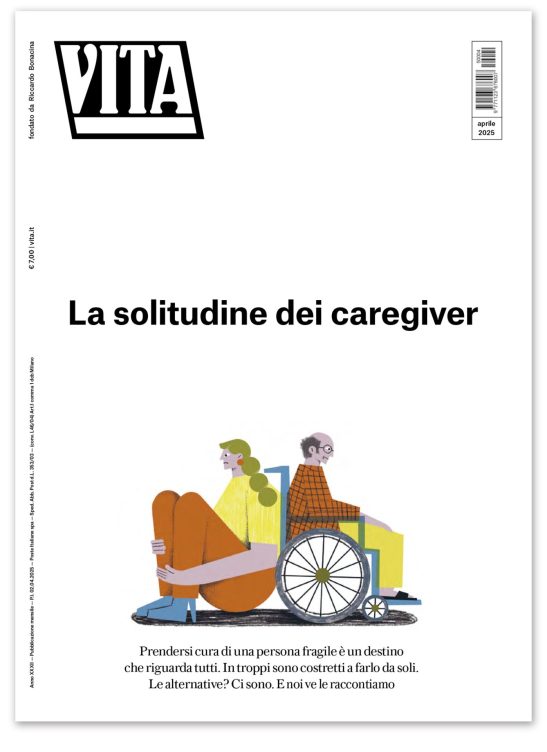Italy: International adoptions lack transparency
15 years on from the Hague Convention legal expert Jennifer Degeling explains why there are still so many black holes in the system and why the change must be moral and grassroots
di Staff
It?s called ?child laundering?, which is a sinister way to define the business of legally adopting a child who has been illegally taken from his family. Just like money laundering.
Jennifer Degeling, senior legal officer for the Hague Convention on intercountry adoption, talked about the dark side to international adoptions during a conference in Venice organised by the Italian aid centre for infacy (Ciai) to celebrate the 15th anniversary of the multilateral treaty.
The balance she cast has highlighted the system?s contradictions: the 75 States that adhere and the more than 550 member organisations that recognise the Convention?s guiding principles to protect minors, demonstrate that the Convention is a success. ?But this only applies to those countries that have ratified the agreement?, explains Degeling. ?The truth is that only a small minority of the over 40 thousand adoptions that take place every year are carried out using this legal framework. This does not mean that the Hague Convention has not brought an important change, that it is not a standard of rights that cannot be renounced?.
But there are still too many grey areas, says the legal expert. To start with, what adoption is taken to mean. ?It is no longer seen as an act of solidarity towards a child needing a family?, she explains, ?rather, it has become a means of satisfying the needs of childless parents in the developed world, where fertility levels are decreasing?.
The laws of the market
This world wide phenomenon ? that since the post war era has reached more than one million adoptions – the countries that children are sourced from have changed progressively: first there were the European States broken by world war, then Asia, with Korea and Vietnam in first place; then, in the eighties, South America followed by Eastern Europe. ?And now the future supply of children will probably be Africa?, says Degeling. And her concern is more than justified as it is estimated that the African continent contains 48.3 million orphans (of an estimated 143 million orphans in the world); the adoption statistics in the United States say that in 2006 there has been an 75% increase in adoptions from Ethiopia and a 93% increase of adoptions from Liberia. ?This makes me think that Africa could become the new source for a market in which demand is very high? says the expert.
The number of western couples wishing to have a child is more or less stable, while the number of available children decreases as development and human rights increase in countries of origin. Between 2004 ? 2006, world wide adoptions have decreased from more than 45 thousand to 42 thousand because there are fewer ?suitable? children. Institutions, on the other hand, are full of ?grown-up? children, or children who have brothers and sisters with disabilities or behavioural problems. Data for 2005 shows that in Brazil almost all adopted children were more than 5 years old or had special needs, explains Degeling. And she doesn?t hide the truth: many parents who have not been able to adopt children choose illegal paths.
Illegal practices
Jennifer Degeling makes it very clear: ?The trend towards illegality is very strong, especially in countries that haven?t ratified the Hague Convention?. The system?s weakest link is that minors are abandoned. Prior to a legal, but ?laundered?, adoption, there are many ways that a child can be taken away from his family. ?From right out kidnapping to the buying and selling of children whose parents can?t afford to bring them up ? the parents tell the children they will grow up to be rich or that they are being sent to study abroad – to the exchange of children for pay off debts or even the adoption of children who just lost their way?.
A frightening scenario, and one who?s dynamics are well known. According to Degeling, this is how it goes: ?At the centre there are the poor countries who have no control over procedures and adoptive frameworks. The minors? black market develops slowly and becomes, gradually, enormous. Scandal breaks out, the moratorium starts, adoptions close. Is that the end? No, because in the meantime the cycle has already begun in a different country?.
How to bring an end to this situation? Jennifer Degeling only sees one possible avenue, and perhaps the hardest of all: to bring about moral change in adoptive countries. ?The countries that end up adopting children have real peer pressure power over the countries that provide children for adoption? she says. It is the adoptive countries that must help countries of origin to develop legality and to adopt measures that protect children and prevent abuse. This is what the correct application of the Hague Convention means. Unless all parties take on their share of responsibility it will be hard to stop the child market.?
More info
www.ciai.it
www.euradopt.org
17 centesimi al giorno sono troppi?
Poco più di un euro a settimana, un caffè al bar o forse meno. 60 euro l’anno per tutti i contenuti di VITA, gli articoli online senza pubblicità, i magazine, le newsletter, i podcast, le infografiche e i libri digitali. Ma soprattutto per aiutarci a raccontare il sociale con sempre maggiore forza e incisività.
